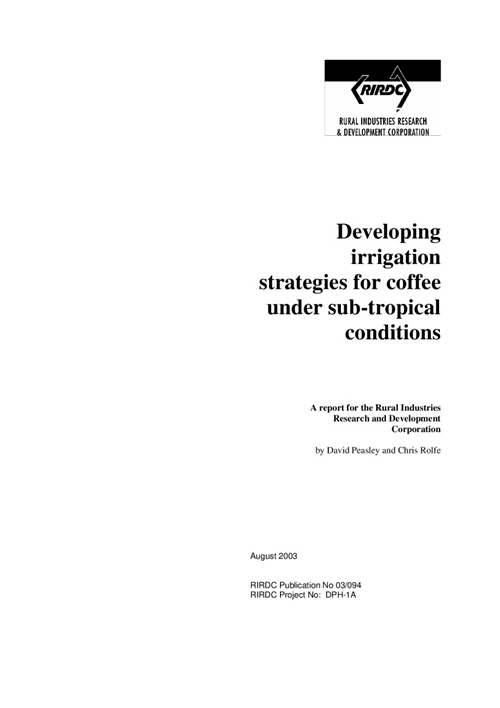Australia grows only the higher quality Arabica coffees, which are used in the speciality or roast and ground market. Whilst present production is small (around 500 tonnes) there is potential to replace a significant proportion of the 12 – 15,000 tonnes of Arabica coffee imported into Australia annually. This section of the market is growing at a rate of over 6% per year, as the demand for instant coffee steadily declines. Expansion of Australia’s coffee industry is limited by the area of suitable land for mechanised coffee production, the availability of irrigation water and competition with other crops.
With the cost of water set to escalate through water trading, it is imperative that a cost/ benefit analysis on the return per megalitre of water be carried out to assist investors in this industry make sound decisions on water use that will provide an acceptable return on investment.
This publication examines how efficient use of irrigation can assist the coffee industry to achieve quality production with minimum environmental impact. It looks at the optimum water requirements and likely returns/megalitre to grow coffee in the sub-tropics and establishes design criteria for irrigation and storage systems.





